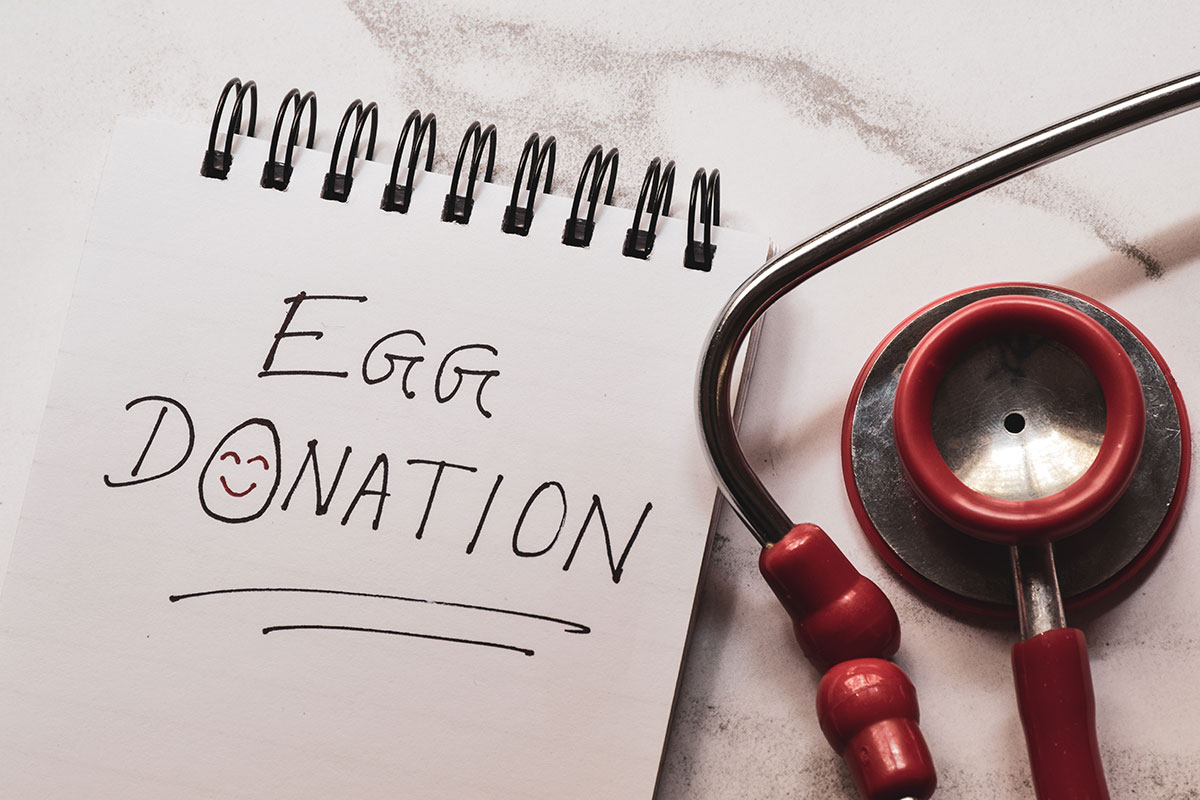Egg Retrieval Process
What to expect from the last step in your egg donor cycle.
The egg retrieval process is the last stage in your egg donation journey. After all the screenings, approval and matching process, and ovarian stimulation to develop lots of healthy eggs, this procedure is how those eggs are actually collected and prepared for donation. The egg retrieval is a minor surgical procedure that takes place at a fertility clinic. Here’s everything you need to know about this exciting last step in your donation cycle.
Pre-Egg Retrieval Process: Ovarian Stimulation and Trigger Shot
Normally, your body develops one mature egg each month. In order to retrieve multiple healthy eggs for donation, you’ll go through a process called ovarian stimulation. This involves multiple hormone shots a day for around two weeks. The medications give your ovaries a boost, so they develop multiple eggs at the same time. Your doctor will see you regularly over these two weeks to monitor your body’s response to the hormones and adjust your medications as needed. When enough eggs have developed, you’ll receive one more hormone injection, called a “trigger shot.” This shot tells your ovaries to get ready to release the mature eggs. Then, around 36 hours after the trigger shot, you’ll return to the clinic for the egg retrieval itself.
How Does the Egg Retrieval Work?
The actual procedure takes less than 30 minutes. You’ll arrive at the clinic a couple hours before the retrieval itself, to check in with your team and receive anesthesia. The egg retrieval process involves an IV sedative, so you won’t be awake during the procedure.
Once you’ve received the anesthesia, your doctor will begin the retrieval. In order to retrieve the eggs, your doctor will use a transvaginal ultrasound to see the ovaries. This means they will insert a very thin wand into your vagina; the wand creates a picture using ultrasound waves. Once the doctor can clearly see your ovaries, they will insert a very thin needle through the vagina into each egg follicle. Then, they use suction to draw each egg through the hollow needle, one at a time. Once all the mature eggs are retrieved, the doctor will remove the ultrasound wand and the needle, and the procedure is finished.
Rest & Recovery After the Retrieval
After the retrieval, you’ll rest for a little while in the clinic as the anesthesia wears off. This should only take up to an hour or so. You’ll need someone to drive you home, as you can’t drive after a procedure involving anesthesia. While you are resting, an embryologist will count how many eggs were retrieved and safely secure them to either be transferred fresh to an intended parent or frozen for them to use later.
Once you are home, it’s a good idea to take it easy for the evening. While the egg retrieval process is relatively minor, it’s still surgery, and your body needs time to rest. Most donors can go back to their normal activities, like school or work, the day after the retrieval. Ask your doctor about when to resume more intensive activities like exercise.
What to Look Out for After the Egg Retrieval
While you rest, keep an out for any unexpected symptoms. Many donors experience some bloating, cramps, or fatigue after the egg retrieval. If you feel more severe symptoms like nausea, vomiting, diarrhea, sudden weight gain or significant abdominal swelling, or shortness or breath, contact your doctor immediately. These could be signs of ovarian hyperstimulation syndrome (OHSS), a relatively uncommon response to the egg retrieval process that can be serious if untreated.
Finally, remember that you are still extra fertile! To avoid an accidental pregnancy, doctors recommend abstaining from intercourse until your next period after the egg retrieval.
We’re Here to Answer Your Questions About the Egg Retrieval Process
The egg retrieval process is at the heart of the donation journey. The procedure is safe and quick, and most donors have little discomfort afterwards. If you have any questions about what to expect, we’re here to help – reach out to us today.


